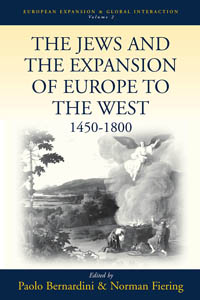The Black-and-White World of Walter Ashby Plecker
The Virginian-Pilot
2004-08-18
Warren Fiske
Lacy Branham Hearl closes her eyes and travels eight decades back to what began as a sweet childhood.
There was family everywhere: her parents, five siblings, nine sets of adoring aunts and uncles and more cousins than she could count. They all lived in a Monacan Indian settlement near Amherst, their threadbare homes circling apple orchards at the foot of Tobacco Row Mountain.
As Hearl grew, however, she sensed the adults were engulfed in deepening despair. When she was 12, an uncle gathered his family and left Virginia, never to see her again. Other relatives scattered in rapid succession, some muttering the name “Plecker.”
Soon, only Hearl’s immediate family remained. Then the orchards began to close because there were not enough workers and the townspeople turned their backs and all that was left was prejudice and plight and Plecker.
Hearl shakes her head sadly.
“I thought Plecker was a devil,” she says. “Still do.”
Walter Ashby Plecker was the first registrar of Virginia’s Bureau of Vital Statistics, which records births, marriages and deaths. He accepted the job in 1912. For the next 34 years, he led the effort to purify the white race in Virginia by forcing Indians and other nonwhites to classify themselves as blacks. It amounted to bureaucratic genocide…
…From the grave, Plecker is frustrating the efforts of Virginia tribes to win federal recognition and a trove of accompanying grants for housing, health care and education. One of the requirements is that the tribes prove their continuous existence since 1900. Plecker, by purging Indians as a race, has made that nearly impossible. Six Virginia tribes are seeking the permission of Congress to bypass the requirement.
“It never seems to end with this guy,” said Kenneth Adams, chief of the Upper Mattaponi. “You wonder how anyone could be so consumed with hate.”..
…Plecker’s first 12 years on the job were groundbreaking and marked by goodwill. He educated midwives of all races on modern birthing techniques and cut the 5 percent death rate for black mothers almost in half. He developed an incubator – a combination of a laundry basket, dirt, a thermometer and a kerosene lamp – that anyone could make in an instant. Concerned by a high incidence of syphilitic blindness in black and Indian babies, he distributed silver nitrate to be put in the eyes of newborns…
…Plecker saw everything in black and white. There were no other races. There was no such thing as a Virginia Indian. The tribes, he said, had become a “mongrel” mixture of black and American Indian blood.
Their existence greatly disturbed Plecker. He was convinced that mulatto offspring would slowly seep into the white race. “Like rats when you’re not watching,” they “have been sneaking in their birth certificates through their own midwives, giving either Indian or white racial classification,” Plecker wrote.
He called them “the breach in the dike.” They had to be stopped.
Many who came into Plecker’s cross hairs were acting with pure intentions. They registered as white or Indian because that’s how their parents identified themselves. Plecker seemed to delight in informing them they were “colored,” citing genealogical records dating back to the early 1800s that he said his office possessed. His tone was cold and final.
In one letter, Plecker informed a Pennsylvania woman that the Virginia man about to become her son-in-law had black blood. “You have to set the thing straight now and we hope your daughter can see the seriousness of the whole matter and dismiss this young man without any more ado,” he wrote.
In another missive, he rejected a Lynchburg woman’s claim that her newborn was white. The father, he told her in a letter, had traces of “negro” blood.
“This is to inform you that this is a mulatto child and you cannot pass it off as white,” he wrote.
“You will have to do something about this matter and see that this child is not allowed to mix with white children. It cannot go to white schools and can never marry a white person in Virginia.
“It is a horrible thing.”…
…Plecker’s racial records were largely ignored after 1959, when his handpicked successor retired. Virginia schools were fully integrated in 1963 and, four years later, the state’s ban on interracial marriage was ruled unconstitutional. In 1975, the General Assembly repealed the rest of the Racial Integrity Act…
Read the entire article here.





